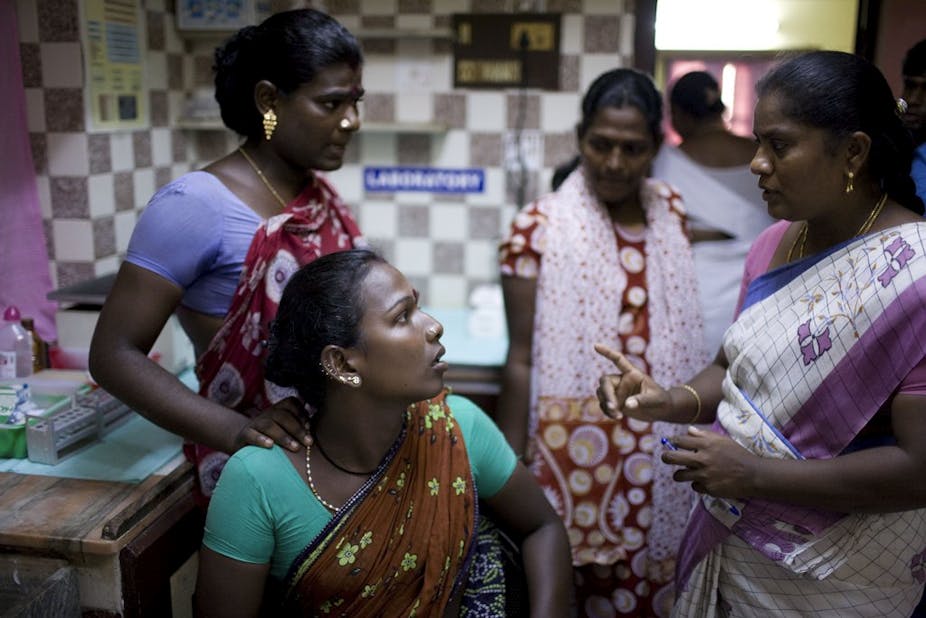Why do some people get stuck in poverty? Most answers to this question start with the idea that external constraints trap people in poverty. These constraints could take the form of malfunctioning credit and insurance markets, institutional biases that hinder investment and innovation, or more obviously “bad” problems such as corruption.
However, such analysis alone is too simplistic. It does not adequately take into account how the experience of poverty impacts on the beliefs and aspirations of the poor. Many economists now believe that poverty has detrimental self-reinforcing effects on self-perception, self-confidence and “aspirations failure”. Aspirations failure refers to the condition of a person who does not aspire to escape poverty, even though it would be escapable with additional effort that is within their means.
The key question is whether such internal constraints - this failure of ambition and confidence - are a cause of poverty, or a consequence.
How are low aspirations and poverty traps linked?
Recent research has drawn the dots between internal constraints and poverty traps. The research builds on the assumption that individuals underestimate how their aspirations may evolve over their lifetimeas a consequence of their own effort. The rich and poor alike suffer from this bias, but it has greater impact on the poor.
A key factor that makes aspirations failure more likely for those that are already poor is they face much greater downside risk from bad luck in their lives. The greater downside risk lowers their expected benefit from investing effort into any goal: when your child is performing poorly in school, and you are worried about not having enough money in the near future, you may choose not to make the investment (eg hiring a remedial teacher) to mitigate your child’s poor performance. Lower effort, driven by higher risk, increases the odds of low performance and feeds into lower aspiration and achievement in the long run.
This is all well and good in theory, but what about in practice? How easy is it to break the spell of low aspirations? It is too early to draw any definite conclusions, but preliminary evidence from projects in India is very positive.
Building dreams in Kolkata
An ongoing project in Kolkata called “Dream Building” is working to raise the aspirations of a marginalised group in society: sex workers. Given the social stigma attached to the sex trade, particularly in India, many sex workers suffer from a loss of hope and a sense of defeat.
The programme aims to give sex workers a renewed sense that they are as entitled as others to hope and to aspire, to teach them how to work towards these aspirations, and to develop a positive, proactive outlook on the future. In eight sessions, experienced trainers use novel methods of discussion and engagement with the subjects. Some of the trainers are themselves former sex workers who have reinvented their lives and careers and thus serve as role models for the participants.
Assessment was focused on behavioural and psychological measures, such as opinion about oneself, sense of shame (arising from sex work as a profession), feeling of discrimination, and “locus of control” (whether they felt in charge of their own destiny).
It found that being exposed to the workshops improves the sense of self-worth in women, reducing the chances of them thinking of themselves as being a “fallen woman” or a sinner by a third. Following the workshops, these women are also significantly (by around 30%) more likely to feel discriminated against, which might be reflective of their heightened sense of self-worth.
The intervention also improved these women’s self-confidence and strengthened their belief that their life was under their control and increased their sense of mobility.
When the sample of women who attended the workshops is compared with those who did not, the results are similar to the before and after results. Whether the difference is between two different women, or in the same person over time, it is clear that the workshops had a significant effect in raising aspirations and sense of self-worth.
When designing an anti-poverty strategy, combating external constraints is clearly important. No one would argue that corruption and poor credit are not huge problems. But the most effective policy interventions are those that combine this and seek to alter beliefs and aspirations. Fixing external problems alone is not enough; people stuck in poverty also need support to aim higher.

